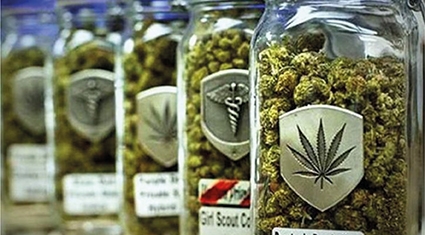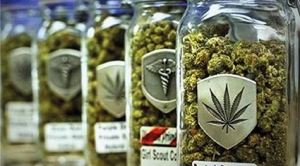Georgia’s New Gold Rush: Or the Economic Prospects of Export of Medical Marijuana
This article continues the theme of ISET Economist blog “Decriminalize Marijuana?” written by my colleague Saba Devdariani in June 2015, where he described the philosophical aspects related to marijuana state regulations and medical consequences of its consumption.
Recent changes in legislation
Three years after the blog was published, regulation of cannabis became the hottest topic of discussion in the social-political life of Georgia. On July 30th 2018, the Constitutional Court de jure legalized personal consumption of marijuana by declaring that “the administrative responsibility for marijuana use, if it does not create any threat to third parties, is unconstitutional”. The Georgian society reacted to the news in radically different ways. Some celebrated winning “the fight for freedom”, while some saw it as the end of the whole Georgian nation, traditions and culture. Without any changes in the existing legislation on cultivation, production, and sales of marijuana, the decision created a legal vacuum. In one and a half months the Government created a 131 pages draft law, restricting the consumption of cannabis in public spaces, such as parks, bars, restaurants, concert halls, stadiums and more, as well as consuming marijuana at work, driving under its effect and for people under age 21. De facto it would be legal to consume cannabis only at home. The second part of the law, however, was the most interesting, as it permitted the production and export of cannabis for medical and cosmetic purposes. While the leader of the GD party, Bidzina Ivanishvili, expressed a positive attitude towards the proposal and the minister of finance Ivane Machavariani stated that in 2-3 years the export of cannabis will amounted to 1 billion GEL, the initiative was withdrawn from the Parliament after the protests from the Georgian Orthodox Church.
Yet, the question remains – just how lucrative the medical marijuana export could be for Georgia? Will it become the gold vein that would help fill the state coffers with foreign currency during the times of export slump? In this article I focus on a simple back-of-the-envelope calculation for Georgia’s export potential in cannabis for pharmaceutical purposes.
THE WORLD MARKET
The legal use of cannabis has increased substantially since 2000. Before, legal use was restricted to scientific research and was reported only by the United States. However, more and more countries started to use cannabis and its extracts for medical purposes. According to the UN data, total licit production of species constituted only 1.4 tons in 2000; by 2016 it skyrocketed to 209.9 tons. UK had the biggest share in production - 44.9% of total world production (95 tons), Canada followed with a 38.4% share. Portugal (10%), Israel (4.4%), Netherlands (0.7%) and Chile (0.7%) were other major players on the cannabis market.
These countries are the main competitors of Georgia in the global market for medical cannabis – along with Australia, Colombia, Lesotho and Zimbabwe – the countries, which legalized cannabis cultivation/export earlier this year, and Lebanon planning to start the production by the end of 2018. With so many countries jumping on the opportunity, Georgia has most likely already lost the fierce competition for the lucrative market. According to the different estimations, despite the world’s growing demand for medical cannabis, in 2021 Canada’s production only will be enough to satisfy it.
"We would like to be, potentially, the world's number one medicinal cannabis supplier," Greg Hunt, Health Minister of Australia
“Israel can become an exporter of medical cannabis with an income worth 4 billion shekels ($1.1 billion) a year.” – Ayelet Shaked, Justice Minister of Israel
Currently, only 31 countries and some states in USA legalized medical use of cannabis in some capacity, or in the form of cannabis-derived pharmaceuticals. Considering the fact that cultivation of marijuana is officially prohibited in most of them, these countries represent the potential market for Georgian export of cannabis. However, in some cases, for example in Jamaica, Chile, Peru or Mexico, the legal market is considerably squeezed by “mind-blowing” scales of illegal counterparts.
Despite the pessimistic overview of the prospects on global market for medical marijuana, I don’t want to disappoint the Government’s hopes to boost exports through cultivating new species. Marijuana should not be considered as a pure commodity, such as copper or manganese; there is a wide variety of cannabis, and cannabis-based products from Georgia could find its niche markets and sell at much higher margins than just a gram of raw weed. The situation is similar to wine production/export – despite the fact we can’t compete with Argentinian, Chilean or Australian wines in terms of prices or scales of production, the sector is still profitable and wine remains one of the top export product for Georgia (I know that comparing wine to marijuana in any context is not a good manner).
THE PROFITS
The costs associated with starting a legal business in the cannabis sector differs, of course, between countries and depends on existing regulations, fees, land and electricity prices, infrastructure costs, etc. Table 2 shows price breakdown for cultivation of medicinal cannabis under different options in Australia.
According to the existing draft law, future seekers of fortune in Georgia are required to grow the plant in indoor spaces, which means that annualized cultivation cost of 0.9 ha for them will be about $21.2 million (or less - material costs include expenses on seeds, electricity, insurance, pesticides, fertilisers and nutrients. I assume that prices on all of these cost components and labour costs are significantly lower in Georgia than in Australia).
The average yield of dried flowers per square meter in indoor spaces are 300 grams x 4 times per year. It means that on average an 0.9 ha indoor farm cultivates about 11 tons of dried cannabis per year, which results in $33 million total revenue or $11.8 million net profit. Considering the fact that due to fast growing supply the price of dried marijuana is dropping year by year. the business could become unprofitable soon if legal producers wouldn’t switch to production and export of medicines and other cannabis-infused products. And it is easy to calculate that Georgian needs about 12-13 ha of indoor cultivated spaces to reach the Ivane Machavariani’s desired value of export of 1 billion GEL.
Table 1:Countries where medical use of cannabis is legalized
|
Argentina |
Croatia |
Germany |
Lesotho |
Netherlands |
San Marino |
UK |
|
Australia |
Cyprus |
Greece |
Luxembourg |
Norway |
Switzerland |
|
|
Canada |
Czech Republic |
Israel |
Macedonia |
Peru |
Turkey |
|
|
Chile |
Denmark |
Italy |
Malta |
Poland |
Uruguay |
|
|
Colombia |
Finland |
Jamaica |
Mexico |
Romania |
Zimbabwe |
|
Table 2: Annualized costs by cultivation regime, $ million
|
Cost category |
Broadacre (13.2 ha) |
Greenhouse (1.5 ha) |
Indoor (0.9 ha) |
|
Capital, land and infrastructure |
0.02 |
0.32 |
1.33 |
|
Security design and infrastructure |
0.43 |
0.3 |
0.27 |
|
Labour for cultivation |
7.67 |
7.79 |
7.79 |
|
Materials for cultivation |
0.67 |
7.6 |
10.74 |
|
Costs of compliance |
0.07 |
0.07 |
0.07 |
|
Direct fees and charges |
1 |
1 |
1 |
|
Total |
9.86 |
17.08 |
21.2 |
Source: Deloitte Access Economics
P.S. When thinking or making decisions about something bad for my health I always remember my father’s words he used to repeat to me in my teenage years: “My son, you should try everything in your life, but do not stick with the bad things”. The same advice could be relevant for the whole country.
By Giorgi Mzhavanadze











